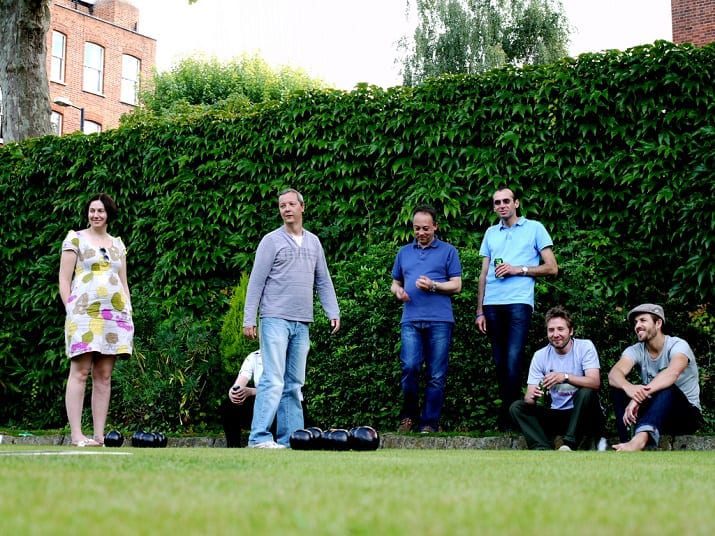The History of Lawn Bowls
Lawn bowls is a modern game with a long and rich history. It’s evolved over hundreds of years, and although it’s now played recreationally in many countries, its roots were not so civil – it’s thought that the game originally stemmed from military practices. And before reaching its status as an internationally recognised sport, it went through several transitions, along with a long period during which it was banned.
It all started in London in the 13th century. Before the advent of gunpowder and well-designed long-bows, stone bowls were actually used as weapons, throw or launched from slingshots, intended to cause blunt damage to enemy troops.
Somehow they found their way into recreational usage in the streets of London. The earliest accounts of bowls-like activities mention stones thrown or rolled, and aimed at upright cones as opposed to the small white jack used in today’s game.
The earliest roots of the game are unclear, but it was very definitely established by the end of the thirteenth century – the oldest surviving bowling venue is the Southampton Bowling Green, and it dates back to 1299.
Although it’s not clear how similar medieval bowls was to the current incarnation, manuscripts from the time provide some clues. They depict players using just one bowl, along with various techniques – standing, stooping, and kneeling. It’s thought that by this time bowls were rolled and no longer thrown.
The Dark Days Of Bowls – Medieval Suppression
Interestingly enough, bowls had something of a checkered history in Britain. It was actually banned under the reign of King Edward III. The reasoning was that the game of bowls might distract people from practising archery – a skill that was at the time essential to Britain’s military prowess.
The prohibition of the game actually lasted centuries. Bowls was not allowed to be played in public places. It didn’t help that the game had also become associated with drinking, taverns and vulgar behaviour: this reputation probably delayed the proliferation of the game for a couple of hundred years.
All this didn’t stop wealthy individuals bowling on private premises. But servants and household staff were only allowed to play at Christmas, under their master’s supervision, until 1845 – and members of the general population were be fined for playing in public.
The 19th Century: The Game Re-Emerges
1864 saw the first attempt to lay out the rules of the game in written form. William Mitchell, a Scottish Merchant, published the “Manual of Bowls Playing” after some years working as the secretary of a bowls club in Scotland. This manual formed the basis of the rules of the game, which have remained fairly unchanged right through to the modern game.
Although bowls was popular in the 1800’s, its growth was restricted by the lack of suitable playing grounds around the country. Only high-end bowls clubs and wealthy land-owners could afford to maintain land suitable for the game.
This all changed after 1830, when the first lawnmower was patented and put to widespread use. It allowed easy maintenance of bowling greens, alongside pitches and courts for various other sports that we now enjoy worldwide.
A national bowling association was established in in the late 1800’s, and the rules for lawn bowls were formally codified.
Bowls in Australia
Lawn Bowls spread to Australia surprisingly quickly. The Australian National Lawn Bowls Association was established in the late 1880’s, before one was formed in Scotland. Of course, bowls was played informally in Australia for some years prior, and it’s likely that Lawn Bowls was introduced with the first colonists.
Since then, the game has gone from strength to strength. It’s now played in many countries, with several national and international tournaments every year, and the game enjoys a large base of fans and bowlers worldwide.







